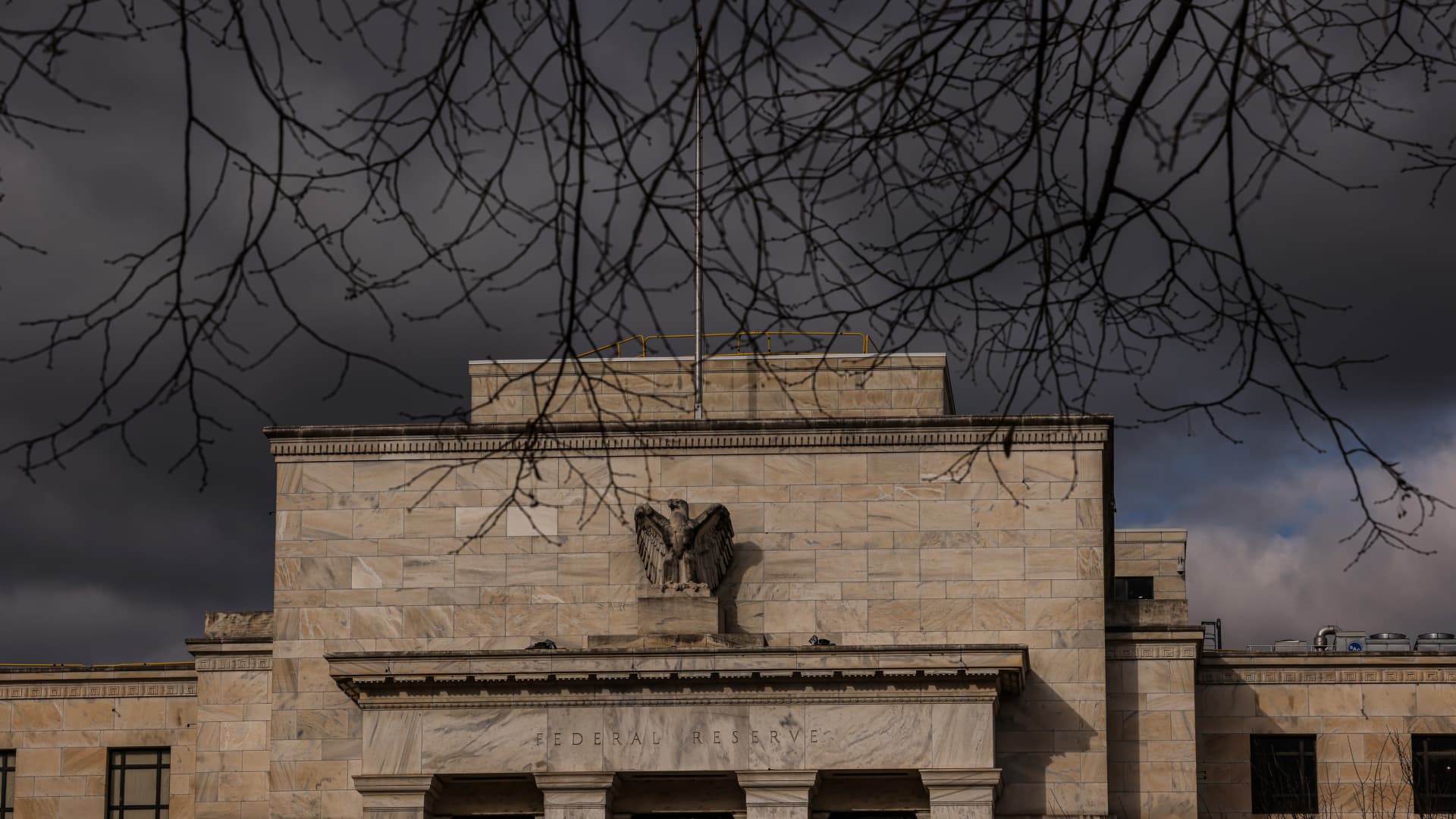The Marriner S. Eccles Federal Reserve building in Washington, DC, US, on Thursday, Dec. 28, 2023.
Valerie Plesch | Bloomberg | Getty Images
This report is from today’s CNBC Daily Open, our new, international markets newsletter. CNBC Daily Open brings investors up to speed on everything they need to know, no matter where they are. Like what you see? You can subscribe here.
What you need to know today
Blow to markets
U.S. markets fell Wednesday, spooked by minutes of the Fed meeting in December, as the 10-year U.S. Treasury yield briefly topped the 4% mark. Asia-Pacific markets followed Wall Street lower Thursday. Both mainland China and Hong Kong’s indexes fell even as business activity in both places picked up in December. Bucking the trend, India’s Nifty 50 Index added around 0.6%.
Soft landing on track
Richmond Federal Reserve President Thomas Barkin expressed confidence the U.S. economy was on track for a soft landing — that is, a scenario where inflation subsides to 2% or below without causing the economy to contract. However, Barkin sees four risks to the soft landing: growth could reverse; unexpected shocks could occur; inflation might not dip below 2%; high demand could keep prices up.
‘Close sesame’
Alibaba was once the crown jewel of China’s technology sector. But the company has stumbled in the past 12 months. In March, the company announced a massive restructuring, which was followed by a personnel reorganization; in November, Alibaba scrapped a highly anticipated public listing of its cloud business. Its shares are down by 75% from 2020. Where does the company go from here?
[PRO] Cheaper than the S&P
The S&P 500 rallied 24% in 2023, delighting (and perhaps surprising) investors. But that also means stock valuation’s high, in terms of the ratio of price-to-earnings per share. Still, there are some stocks that are trading at cheaper valuations than the broader S&P — and which analysts expect will have strong earnings growth in 2024.
The bottom line
The U.S. Federal Reserve hasn’t lost its role as one of the main driving forces for markets.
The good news first: Minutes showed Fed officials concluding rate cuts in 2024 are likely.
“Almost all participants indicated that, reflecting the improvements in their inflation outlooks, their baseline projections implied that a lower target range for the federal funds rate would be appropriate by the end of 2024,” the document said.
But that’s nothing new. We already knew that from the dot plot released last month.
The part that spooked markets: “Participants … reaffirmed that it would be appropriate for policy to remain at a restrictive stance for some time until inflation was clearly moving down sustainably toward the Committee’s objective.”
Logically speaking, that’s not news to markets, either. “Data-dependent” has been the favorite phrase of the Fed over the past six months. And it’s understandable to say cuts will happen only when inflation’s ebbing.
But the minutes also indicated an “unusually elevated degree of uncertainty” about the path of monetary policy, suggesting even the three cuts aren’t set in stone — although, to be fair, the dot plot is just a projection, not a promise.
Compare that sentiment, however, with the six quarter-point cuts markets are expecting and it’s easy to see why markets reacted the way they did yesterday.
The S&P 500 lost 0.8%, the Dow Jones Industrial Average slipped 0.76% and the Nasdaq Composite fell 1.18%, its fourth consecutive losing day. Meanwhile, yield on the 10-year Treasury briefly crossed the 4% mark as investors fretted over unexpectedly higher-for-longer interest rates.
Jobs data will come out Friday, and data on U.S. consumer price index in exactly a week. Both numbers will not only determine the path of rates, but also where markets go.
— CNBC’s Jeff Cox contributed to this report.







